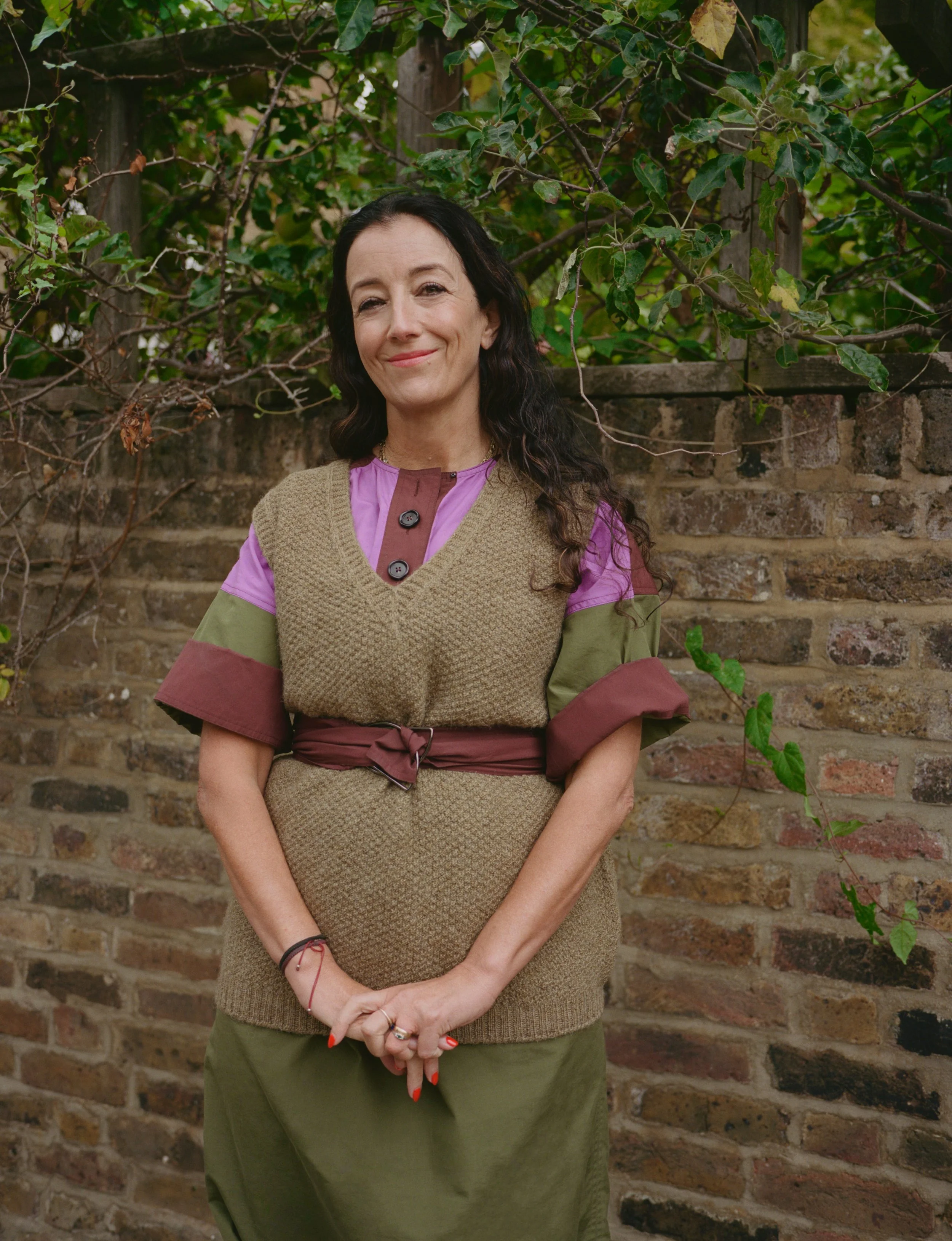Not Your Average Model - When I was Asked to Model for John Smedley in Celebration of Wool Month
Who knew wearing wool would take me out of my comfort zone from behind the camera to in being an actual fashion model!
I spent many happy years as a stylist, hurtling around the world for editorial, advertising and celebrity shoots, with agencies in Milan, Paris, London, and New York, as well as Hamburg and Istanbul. I knew my favourite seat on the Eurostar and every PR office, plus when to call offices in Paris and Milan - the 10am - 11.30am window was ideal: before they went to lunch, for hours, very much unlike the UK’s Protestant never-ending work ethic. But, apart from one shoot for Harper’s Bazaar US, where one of the celebrities was a no show, and the photographer decided to set the lens - and the air machine on me - I have remained firmly behind the camera. I am not entirely sure he was thrilled with the results: blinking, eyes half closed. I learnt it is not as easy as it looks to keep your eyes wide open, when you are being blasted with lights, wind, and all of your team peering intently at you. I loved being behind the camera, working with the photographer, hovering over their shoulder, cajoling the model, nurturing the team to achieve more. Always the best buzz.
So, it was with some surprise years later, when Jess McGuire-Dudley, the new Managing Director at John Smedley asked me to model for their Stories of Smedley campaign. John Smedley’s ethos aligns with our values at Fashion Roundtable, with an incredible heritage, their knitwear has been made in England since 1784, and showcasing best practice. For the shoot I wore a woollen tank top that is also made using British wool. Indeed in the spirit of our values aligning, they have partnered with The Great British Wool Revival (GBWR).
Tamara in a John Smedley vest made with British wool, over a Marni dress she bought secondhand from the Trinity Hospice charity shop in Kensington.
Video @lloyddddddddddddddddd
Styling @martin__metcalf
Grooming @mariacomparettomua
Here is what John Smedley has to say about this:
“Tamara’s leadership in launching the @greatbritishwoolrevival, a landmark project created by Fashion Roundtable and The King’s Foundation in 2024 to reconnect the wool supply chain from farmer to designer. The initiative maps the UK’s wool industry and champions on-shoring, fibre sovereignty and better business opportunities for communities across the country.
Tamara’s work continues to shape policy, empower innovation and remind us that sustainability begins with collaboration — and often, with wool.”
Indeed, the GBWR map is growing apace. We have well over 200+ businesses from farmer to designer using the map. What this means is more business opportunities for localised, easy to use, and transparent supply chains. Investment into local economies, rebuilding local and national value chains. This in turn, boosts skills, innovation and stabilises income generation. To me, this is more than a feel-good Small Business Saturday shopping day before Christmas (this year on December 6th), as an antidote to Black Friday and its huge price slash sales. This is common sense. Globalisation has created opaque supply chains, where out of sight has literally become out of mind, in terms of production, ethics, and of course pay to workers. The exploitation stories from Bangladesh to Leicester, which so many of us are alert to, are harrowing. If it’s too cheap, someone else is paying, and that is usually the garment worker. Who is all too often a vulnerable young woman.
I am part of the Core Justice Coalition. This spans organisations working on human rights, global poverty, trade, tax, workers’ rights, and the environment. We’re all united in our efforts to end corporate abuses of human rights and the environment, to change the rules so that we can build a fairer, greener world. Of course many of us are all too aware of the impacts of fast fashion, the race to the bottom, and it’s implications in exploitation of people, planet, and our finite resources.
Boosting local supply chains, where there is transparency from the farmer right through to the end product, seems to me a strong commercial solution to this. Aside from the fact with wool it generates a growing demand for a textile, which was once valued so highly wars and marriages were fought over it, but now is all too often a waste byproduct. Our GBWR films explain the story of wool, its rise and fall, and what has been great to see, since we launched GBWR back in September 2024, is the price of wool rising to a 5 year high. I like to think this is not a coincidence.
So what do I see as the cost benefits of using British wool, and revitalising more localised networks to build your business? Of course if you invest in a raw material and infrastructure within the UK, the money stays local. Small local businesses typically reinvest a around 60% back into the local community, compared to large corporations investing just 40%, with less drive to push shareholder profits above local wealth generation. The increased revenue and reinvestment by local businesses help create and sustain local jobs, leading to lower unemployment and potentially higher wages within the community. Local retailers are more likely to use other local suppliers, which strengthens the entire local economy.
Imagine working, as designer Phoebe English (who is on our GBWR map) does, in a consciously small supply chain with a slow fashion mindset; compared to monthly extended trips to China, or Bangladesh, to work with your suppliers. Thriving local businesses generate tax revenues, which given the cost of living crisis, in turn fund local public services. And lastly, the net zero benefits. Locally sourced products often have a smaller carbon footprint due to reduced transportation distances, which translates into environmental cost savings (e.g., less air pollution, lower external costs not captured in market prices).
It goes to the heart of the Gross Value Added versus Gross Domestic Product debate. If you look at the finite figure of buying from a fast fashion brand, or a PPE manufacturer in China, versus that of a transparent supply chain making in the UK, of course the former will be cheaper. But if you look at the value it generates back into the UK economy, it seems to vastly outweigh that short term saving. Supporting local businesses helps preserve the uniqueness of where you live, less Starbucks, more local enterprise, fostering community pride. To me, that is the best of British.
Wool is even more implicit in this, as the huge variety of different sheep across the UK are bred for the weather conditions, our diverse environments, and therefore tell the story of the place they come from, its unique history, climate and even soil conditions.
While I might not be the most comfortable of models, I can see the benefit of coming out of my behind the camera comfort zone, and showcasing British made, heritage driven and supporting both John Smedley and The Great British Wool Revival in the process.


